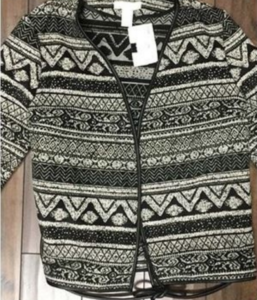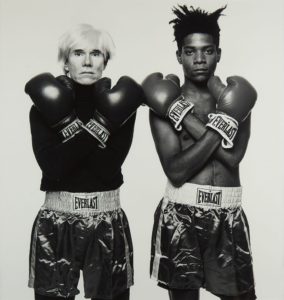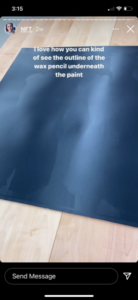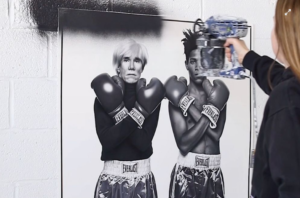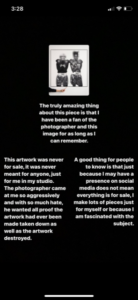AI Art and Copyright in the Unites States
By Benni Amato on March 30, 2023
Leave a comment
While AI art has been around for a few years, late 2022 saw incredible advances, especially after Stability AI released its open source Stable Diffusion tool. Now, consumers have access to a variety of AI art tools, not only tools based on Stable Diffusion, but also with proprietary models from OpenAI (Dall-E 2) and Midjourney (Midjourney, which combines its own proprietary model enhanced with Stable Diffusion).
The widespread adoption of these cutting-edge technological tools comes with many legal questions.
Can You Copyright AI Art?
In the United States, one must own a copyright registration before initiating a lawsuit.[1] But can you obtain a registration on AI art?
The U.S. Copyright Office will not issue a registration if the only listed author is non-human “machine.” See Refusal to Register A Recent Entrance to Paradise.[2]
But what if the listed author is not a machine?
The Copyright Office issued an opinion on February 21, 2023 as to the registrability of a comic book called Zarya of the Dawn, which used AI art generated by Midjourney. The text and the selection and arrangement of images and text of the comic book was subject to copyright protection by the author, Kristina Kashtanova, but the images generated by Midjourney were not.
While the author entered text prompts to generate the images, because Midjourney “generate[d] images in a…way” that was unpredictable to the author,” the author lacked sufficient control over generated images to be treated as the ‘master mind’ behind them.” The Copyright Office was not persuaded that Midjourney was a tool akin to Photoshop,[3] because when artists use tools like Photoshop, “they select what visual material to modify, choose which tools to use and what changes to make, and take specific steps to control the final image such that it amounts to the artist’s ‘own original mental conception, to which [they] gave visible form.’” The fact that the author expended significant time and effort working with Midjourney—for example, regenerating images over and over to find a suitable result to use—such work did not involve the “minimum creative spark” necessary for authorship. The author’s edits to a couple of the images in Photoshop were also deemed “too minor and imperceptible to supply the necessary creativity for copyright protection.”
As it did not appear to be an argument put forth to the Copyright Office, it is unclear whether Midjourney, Inc. itself could claim copyright over the images its tool generates, as Midjourney not only trained its own tool, but has continually fine-tuned the tool using its own proprietary methods. This question may be relevant because Midjourney’s terms of services grants certain paid users, subject to certain exceptions, all rights to the generated images. If Midjourney can be deemed the author of the generated images, can it assign those rights to its paid users?
Many questions remain, such as authorship of images created from one’s own trained model (or embeddings or other trained file types), the degree of alteration of an AI art image needed to constitute a minimum creative spark for registrability, and ownership of resulting images when your own image or sketch is used as the base (e.g., img2img or ControlNet methods).
As more authors apply for copyright registrations for underlying work that incorporates AI art, it will be interesting to see what can be registered.
On March 16, 2023, the U.S. Copyright Office issued a new registration guidance on works incorporating AI art. It recognized that additional copyright issues have not been addressed, but that it has “launched an agency-wide initiative to delve into a wide range of these issues. Among other things, the Office intends to publish a notice of inquiry later this year seeking public input on additional legal and policy topics, including how the law should apply to the use of copyrighted works in AI training and the resulting treatment of outputs.”
Does AI Art Constitute Copyright Infringement?
Two copyright infringement lawsuits have been filed that may lead to decisions on whether the use of AI art models that use copyrighted images for training purposes constitute copyright infringement:
- Andersen et al. v. Stability AI Ltd. et al., Case no. 3:23-cv-00201 before the United States District Court for the Northern District of California, and
- Getty Images (US), Inc. v. Stability AI, Inc., Case no. 1:23-cv-00135-GBW before the United States District Court for the District of Delaware.
Stable Diffusion was trained using a dataset of 5.85 filtered image-text pairs, namely, the LAION-5B dataset. The dataset, scraped from the internet, consists of an index of the URLs to publicly-available images, together with the ALT texts associated with the images, regardless of any associated copyright status of such images, and regardless of whether the images contained watermarks. But while the Stable Diffusion model was trained on these image-text pairs, none of the images are actually stored in the resulting model, as the images were used only in the training process.
The LAION-5B dataset includes images by the artist plaintiffs[4] in the Andersen case, as well as watermarked images from Getty Images. The inclusion of these copyrighted images in the training data is the basis for the direct copyright infringement claims. Whether infringement exists will likely hinge on whether the defendants’ use constitute fair use. A fair use analysis is a highly factual one that generally takes into account the purpose and character of the use, the nature of plaintiff’s work, the amount and substantiality of the portion of plaintiff’s work used, and the effect of defendant’s use on the market for, or value of, plaintiff’s work.
Both cases also advance the claim that the defendants removed copyright management information from the source images in violation of 17 U.S.C. § 1202(b). As the LAION-5B dataset links to the source images, and the resulting models do not actually contain the source images, it is not entirely clear how copyright management information has been removed or altered.[5] If such information was indeed removed or altered solely for training purposes, and not otherwise made available to the public, it will be interesting to see whether Section 1202(b) will nevertheless apply.
The Andersen case also alleges a vicarious copyright infringement claim; namely, that “imposters” have relied on using an artist’s name to create AI art that can pass as original works by that artist that are then sold. Plaintiffs have not yet provided specific examples of these alleged “fakes,” but this theory seeks to hold defendants Stability AI, Midjourney, and DeviantArt responsible for end user use.
Both cases also assert non-copyright claims, such as violations of publicity rights (Andersen), unfair competition (both), and trademark infringement and dilution (Getty Images).
We will be tracking these cases and provide updates as they progress, as well as any proposed legislations that may affect AI art.
[1] 17 U.S.C. § 411(a); see also Fourth Est. Pub. Benefit Corp. v. Wall-Street.com, LLC, 203 L. Ed. 2d 147, 139 S. Ct. 881, 892 (2019). No registration is required to issue a DMCA takedown notice (17 U.S.C. § 512(c)(3)(A)), though if the respondent files a counter notice, the copyright owner must file a lawsuit within 14 days, or the allegedly infringing matter will be reinstated (17 U.S.C. § 512(g)(2)).
[2] This opinion is being challenged as part of Thaler v. Perlmutter, Case no. 1:22-cv-01564 before the United States District Court for the District of Columbia. The parties have filed summary judgment motions that have not been ruled upon.
[3] Note that Photoshop itself contains certain proprietary AI tools, though Adobe has yet to release an AI tool that creates an entire image from scratch. A “portrait generator” that can “generate unique photo realistic faces based on characteristics you specify” has been teased with no pending release date.
[4] The Andersen case involves a class action complaint, but as it is still in the early stages of litigation, the class has not yet been certified.
[5] As part of the training process for the original baseline model of Stable Diffusion, images were, however, cropped to a standard square aspect ratio and size for uniformity. The cropped versions of the images have not been made available to the public.



